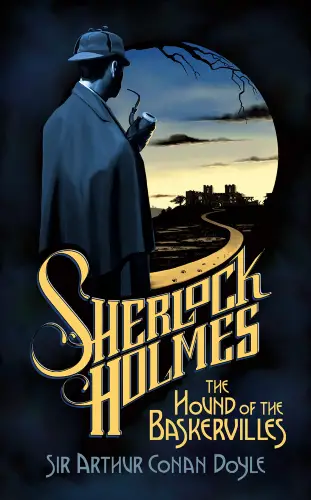The Hound of the Baskervilles
Book Author: Arthur Conan Doyle
Summary reviewed by:
Terrence Timmons
Terrence Timmons
Analyst
Bachelor of Arts (BA), University Of California, Santa Barbara 2019
With over 4 years of experience as an analyst. Terrence Timmons is committed to analyzing summaries without compromising on quality.
The Hound of the Baskervilles: Summary
Imagine, if you will, an ethereal hound of hell, haunting an ancient British family - such is the crux of Arthur Conan Doyle's mystery masterpiece, 'The Hound of the Baskervilles.' Amid the foggy moors of Dartmoor, ensues a tale steeped in centuries-old curse, spectral hounds, and mysterious deaths.
At the heart of the story is the Baskerville family, enshrouded in an eerie curse that dooms every successor to a terrifying death, apparently at the jaws of a monstrous hound. The recent death of Sir Charles Baskerville necessitates the relocation of the heir, Sir Henry Baskerville, from Canada to the haunted Baskerville Hall, thereby setting the stage for intrigue.
The matter soon finds its way to London, engaging the astute intellect of the legendary detective, Sherlock Holmes, and his trusted associate, Dr. John Watson. The duo grapples with a host of clues – a mysterious cane, an old manuscript, and the enigmatic behaviour of people around Baskerville Hall. Holmes, with his sharp, analytical mind, attempts to disentangle the complexities surrounding the Baskerville curse, as Watson provides a steady hand of support.
In 'The Hound of the Baskervilles', Conan Doyle paints a chilling canvas of suspense, gothic horror, and classic mystery. The book, permeated with a perpetual sense of dread, transports you to the misty landscapes of Dartmoor, as the characters grapple with unseen dangers, unsolved mysteries, and unnerving possibilities.
Spoilers (watch a short ad to reveal spoilers)
The Hound of the Baskervilles: Genres
Fiction
Mystery
Gothic
Detective Fiction
The Hound of the Baskervilles: Main Characters
Sherlock Holmes: The famed detective of Baker Street, whose razor-sharp intellect and attention to detail are the cornerstone of the narrative. His belief in logic over superstition (e.g., dismissing the supernatural explanation of the hound) drives the plot.
Dr. John Watson: Holmes’s loyal companion and the narrator, whose humanistic and emotional approach balances Holmes’s clinical analytical abilities. His bravery and reliability are evident when he safeguards Sir Henry Baskerville on Dartmoor.
Sir Henry Baskerville: The heir to Baskerville Hall, characterized by his courage and naivety. He remains undeterred in the face of danger, exemplified when he decides to stay at Baskerville Hall despite the apparent threat.
Jack Stapleton: A seemingly benign naturalist who is later revealed to be a malevolent manipulator. His deception is unveiled when Holmes uncovers his true identity as a Baskerville descendant.
The Hound of the Baskervilles: Themes
Rationality vs. Superstition: Doyle emphasizes rationality through Holmes’s scientific approach towards solving the mystery, debunking the supernatural explanation of the Baskerville curse.
Man vs Nature: The hostile, unpredictable moor represents the dangers of untamed nature, constantly threatening the characters, including the tragic end of Stapleton in the Grimpen Mire.
Deception and Disguise: Stapleton’s entire plot is built on deception, as he disguises himself and the hound to further his own ends. Holmes himself uses disguises and deceptions in his investigations, as seen when he hides his presence in Dartmoor from Watson and Sir Henry.
Class and Society: The Baskerville estate represents the upper-class society, while the existence of an illegitimate Baskerville heir (Stapleton) introduces a conflict of inheritance and social status. Also, the difference in treatment between the staff and the gentry within Baskerville Hall reflects the class distinctions of the period.
Fear and Bravery: The theme of fear is palpable throughout the story with the curse and the hound instilling terror. The characters display varying levels of bravery – Watson’s courage in facing the unknown dangers on the moor, and Sir Henry’s determination to face the curse head-on.


The Hound of the Baskervilles
Date Published: March 25, 1902
Disclaimer: As an Amazon Associate I earn from qualifying purchases.




